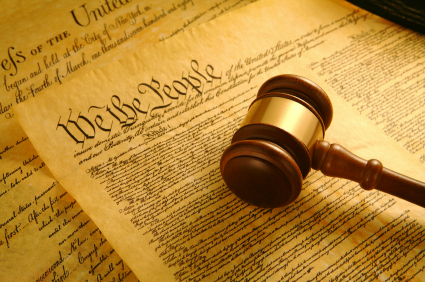Step 1: Go to one of the Domestic Violence Intake Centers.
After the abuse occurs, go to one of the Domestic Violence Intake Centers (DVICs) as soon as possible after an incident occurs. (Note: You can file for a civil protection order in D.C. if you live, work, or go to school in D.C., if you are under the legal custody of a government agency in D.C., or if the incident(s) contained in the petition occurred in D.C.)*
The DVICs are located at:
- D.C. Superior Court (Moultrie Courthouse), Room 4550, 500 Indiana Avenue NW, Washington, D.C. 20001; and
- United Medical Center (formerly Greater Southeast Hospital), 1328 Southern Avenue, S.E., Room 311, Washington, D.C. 20032.**
You can file up to three years after the incident,*** but a delay in filing may make the judge less likely to believe you. If the Intake Center staff cannot help you because of a conflict of interest (e.g., they already helped the respondent in the past), you will be provided with all of the necessary forms to fill out yourself. Note: If you are filing for a civil protection order due to sexual assault or stalking by a stranger or filing against a family member, it is possible that you might not qualify for help through the DVIC; however, you can still file for the civil protection order on your own with the clerk’s office.
Tell the intake counselor that you want to file for a civil protection order. If you are in immediate danger, tell the intake counselor you also want to file a temporary protection order (TPO). The temporary protection order lasts for up to 14 days, or until your hearing for the final civil protection order.**** You must file for a temporary protection order the same day you file for a civil protection order.
* D.C. Code § 16-1006
** D.C. Superior Court website
*** See D.C. Code § 12-301(8)
**** D.C. Code § 16-1004(b)
Step 2: Fill out a petition for a Civil Protection Order.
On the petition, you will be the “petitioner” and the abuser will be the “respondent.” An intake counselor will help you with the paperwork.
Write about the most recent incident of violence, using descriptive language – words like “slapping,” “hitting,” “grabbing,” “threatening,” “choking,” etc. – that fits your situation. Include details and dates, if possible. Be specific.
Be prepared that this process may take several hours.
Note: If the abuser was arrested, and there is a criminal case against him/her, you may meet with someone from the U.S. Attorney’s Office called a victim witness advocate. You are known as the “complaining witness” in the criminal case. The advocate may help you prepare for the criminal case and get you other needed assistance. The criminal case is separate and different from the civil case you are filing.
Step 3: Decide whether or not to request child support.
If you have children in common with the abuser, you can file for child support if the children are living with you. If you believe that filing for child support will place you in danger from the abuser, you do not have to file — this is true even if you are on public assistance. If you fear for your safety, let the clerk at the intake center know that you do not wish to file for child support.
Step 4: Finish filing your petition.
A court advocate will help you file your petition and explain where to go for your hearing. S/he may also be able to assist you in finding other resources, such as shelter housing, emergency funds, and counseling.
Step 5: A judge will consider your petition.
The intake counselor will take your completed forms to the clerk’s office, where court staff will open a court file for you. Court staff will then direct you to the courtroom, where a judge will look at your petition and decide if there is enough immediate danger to give you a temporary order. Temporary protection order hearings at United Medical Center are conducted via a video teleconference with the judge. You will sit in front of a camera and watch the judge on a television screen. In either case, the judge may ask you some questions, or may decide based only on what is written in your petition. If the judge grants the temporary protection order, you will get a copy of it. The judge will also set a hearing date for your final protection order with 14 days. Even if you are not granted the temporary protection order, the judge can still set your case down for a hearing within 14 days.
Step 6: Service of process.
The abuser must be “served,” or given the papers that tell him/her about the hearing date, your petition stating what s/he did, and your temporary protection order (if the judge gave you one). If the abuser lives in D.C., or some nearby Maryland and Virginia locations, the police will try to serve him/her with copies of the papers you filed. There is no charge to have the authorities serve the abuser. You will have to tell them where the abuser lives or works or where s/he can be located. If the abuser does not live in D.C., or if you would prefer someone other than the authorities to serve the papers, you have two options:
- arrange for a friend or family member (over the age of 18) to serve him/her; or
- hire a process server.
Note: You should not try to serve the papers yourself. It could put you in danger, and service from you would not be legally valid.
Step 7: Hearing for a Civil Protection Order.
You must show up to your court hearing if you want to get a final protection order. If you do not go to the hearing, your temporary protection order will normally expire and you will have to start the process over.
You have the right to bring a lawyer to represent you at the hearing. It is a good idea to see a lawyer if you think the abuser will have a lawyer or if you think the abuser will challenge the protection order, custody or child support.
If the abuser fails to appear in court, the judge may decide to grant you the civil protection order in his/her absence (s/he would be in “default” for not appearing) or s/he may decide to reschedule the hearing.
If you both show up at the hearing and the abuser does not consent to having the civil protection order issued, the judge will hold a hearing where you will both be able to present testimony, witnesses, and other evidence. It is generally best to have a lawyer represent you at this hearing to make sure that your rights are fully protected. If the judge finds that the abuser has committed or attempted to commit a crime against you, s/he may grant you a civil protection order.
I was not granted a Civil Protection Order, what can I do?
If you are not granted Civil Protection Order, there are still some things you can do to stay safe. It might be a good idea to contact one of the domestic violence resource centers in your area to get help, support, and advice on how to stay safe. They can help you develop a safety plan and help connect you with the resources you need.
You can also reapply for a Civil Protection Order if a new incident of domestic abuse occurs after you are denied the order.
If you believe the judge made an error of law, you can talk to a lawyer about the possibility of an appeal. Generally, appeals are complicated and you will most likely need the help of a lawyer.
What can I do if the abuser violates the order?
When you have a civil protection order, you are generally the one who will report any violations of that order. If the abuser violates the order, you can call the police and report the violation. Violation of a temporary or final civil protection order is known as “criminal contempt” and can be a misdemeanor crime, which can be punished by a fine, imprisonment for not more than 180 days, or both.* Also, if the abuser committed a crime while violating the order (e.g., s/he violated the order by hitting you), s/he can also be charged with any other crime that s/he committed and punished separately for that crime.
Another option is to file a violation petition (contempt petition) in court. You could return to the Intake Center where you can file:
- a Motion to Adjudicate Civil Contempt (for things such as nonpayment of monetary support); or
- a Motion to Adjudicate Criminal Contempt (for things such as the abuser contacting, threatening, or abusing you).
* D.C. Code § 16-1005(f),(g)
How do I change or extend my Civil Protection Order?
To change the terms of your order, you can ask the judge to change your order if your circumstances change.* You will have to file a motion with the court and then attend another court hearing to convince the judge this change to the order is necessary.
To extend a final Civil Protection Order beyond its expiration date, you would file a motion to extend the order if you believe you still need protection from the court. You will have to give the judge “good cause” to extend the order.* Any violations of the order are usually considered enough of a reason. Generally, you should go to court to file this motion with enough time to have a hearing before the order expires. However, if you file a motion to extend any time before your order expires, your order will remain in effect until the judge holds a hearing and makes a decision on your motion.**
If you no longer feel you need protection of the court, you can file a motion to vacate (rescind) the order.* However, we strongly suggest that you talk to an advocate or lawyer before doing this to make sure this is the step you want to take. If you think you no longer need the order because the abuser hasn’t been bothering you lately, remember that s/he likely stayed away from you because you had the order. If you remove the order, there is nothing to prevent the abuse from re-starting. Instead of vacating the order completely, you may be able to modify the order. This would allow you to keep some of the protection, while placing fewer restrictions on the respondent.
Any motion you file must be served on the respondent. You will both have the chance to appear at the court date where you will explain why you want to change, extend, or vacate the order to the judge. The judge will review the evidence and decide what actions, if any, to take. Please recognize that only a judge can change a civil protection order. An agreement between you and the abuser outside of court does not change the requirements of the civil protection order.
* D.C. Code § 16-1005(d)
** D.C. Superior Court Domestic Violence Unit, Rule 7(d)
What should I do when I leave the courthouse?
Here are some things you may want to consider doing. However, you will have to evaluate each one to see if it works for your situation.
- Review the restraining order before you leave the courthouse. If something is wrong or missing, ask the clerk how to correct the order before you leave.
- Make several copies of the protection order as soon as possible.
- Keep a copy of the protection order with you at all times.
- Leave copies of the order at your workplace, at your home, at the children’s school or daycare, in your car, with a sympathetic neighbor, and so on.
- Give a copy of the order along with a picture of the respondent to security or the person at the front desk where you live and/or work.
- Give a copy of the order to anyone who is named in and protected by the order.
- Take steps to safety plan, including changing your locks (if permitted by law) and your phone number.
Ongoing safety planning is important after receiving the order.



















